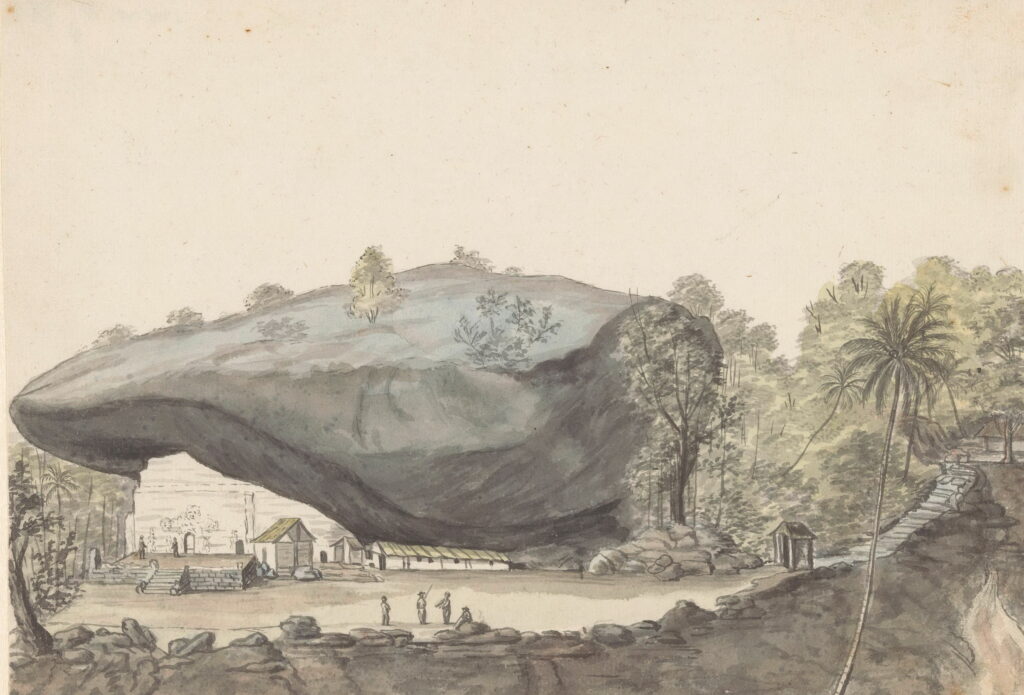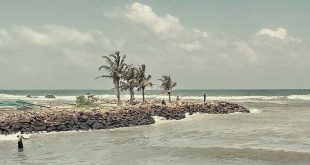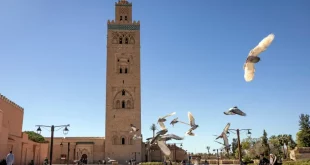
In our childhood days, our friends would often talk of a mystical place known as Jailani, an abode of the saints and a haunt of the jinn. We were told that the place was covered in thick jungle and that a special prayer had to be recited to guard oneself from the attacks of wild beasts. Those who did not do so, we were told, were doomed to meet an untimely death.
In our mind’s eye, we would picture Jailani as a very strange place, rather other-worldly and fraught with much danger. Over the years, we would come to look upon it as a most enchanting spot with a mystique of its own which we longed to experience. This wish of ours was fulfilled only in 2001 when we finally made it to Jailani on a sultry Friday afternoon. Upon our arrival, we were provided accommodation in a meditation room courtesy of its management.
We would spend three days here, exploring its wonders and discovering new things – Ah, the wonders of Sarandib!
HISTORIC SITE
Daftar Jailani is situated about 25 km from Balangoda town in an archaeological reserve area known as Kuragala dating back to about the 3rd century B.C. – 1st century AC. The area with its rock shelters seems to have served as a minor Buddhist monastic retreat in the olden days before it was abandoned and occupied by Muslim settlers at a later date. This is attested by a couple of ancient Brahmi inscriptions found carved on a large boulder in the vicinity of the mosque. However the small number of inscriptions suggests it could not have been an important religious site for Buddhists as the few inscriptions pale in comparison to the multitude of similar inscriptions found in other Buddhist holy places.
Kuragala seems to have served as an important transit point for Arab and Moor traders plying the ancient road from Galle to Ratnapura and Adam’s Peak. Local Muslims believe that the site is sanctified by the visit of the famous Iraqi saint Qutub Mohiyadeen Abdul Qadir Jilani sometime during the early part of the twelfth century. Its name of Daftar Jailani in fact takes its name after this saintly personage.
The site seems to have been rediscovered only in the latter part of the nineteenth century or early part of the twentieth century by a Moorman named Cassim who had dreamt of a holy spot called Jailani towards the sunrise and set about to organise an expedition to locate its whereabouts. A few miles from Jailani the party was informed by some Sinhalese villagers that in the olden days itinerant Arab merchants used to take the route leading to the jungle, and taking this as a sign had proceeded to the spot with the help of a tracker. It was thus that Jailani was discovered.
The idea that Saint Mohiyadeen Abdul Qadir Jilani had visited the site is said to been popularized by a holy man from India named Kapoor Mastan Bawa who is said to have seen the Iraqi saint in a dream. R.H.Bassett in his Romantic Ceylon (1929) refers to a ‘Mohammedan hermit’ named Mastan whose shrine at Kurugala he says is visited annually by numbers of pilgrims. He says “Mastan, a hermit to whom the resources of civilization are not unknown, keeps a small path open through the jungle for the convenience of himself and his pilgrims. He does not live in the cave shrine itself, but has constructed an excellent little house in an old rock dwelling, under the eaves of an overhanging cliff adjoining Kurugala, where, with his wife and family, he lives in comfort, among poultry and pigeons, unbothered by rates and taxes. This hermit de luxe is a picturesque figure, with long hair, a split lip, and large, very luminous eyes; he wears a long cloak and always carries a gun in self-defence against the event of meeting a bear or wild buffalo. He has evidently not acquired the knack, that some saints have had, of being on familiar terms with all kinds of animals”.
Besides Mastan Bawa, other saints such as Ketal Bawa and Pakir Bawa are known to have lived and meditated in and around the environs of Jailani. The place at the time is said to have been covered in thick forest infested with elephants and bears among other wild beasts. It was only in the 1960s that the area surrounding the site was cleared, paving the way for paddy cultivation in the plains below. However, the area still abounds in snakes, monkeys and little yellow butterflies that find their way towards Samanola during the latter part of the year.
ROCK CAVE MOSQUE
The main landmark of Jailani is its rock cave mosque said to have been built about a hundred years ago beneath a huge rock known as Kai-adi-malai. However, there is evidence to show that a mosque or some sort of shrine existed even before this below the same boulder as suggested by a Dutch period painting by Jan Brandes in 1785 titled Islamitisch rotsheiligdom van Kuragala op Ceylon or ‘Islamic Rock-Shrine of Kuragala in Ceylon’ (See accompanying image), in which case the mosque said to have been built by Cassim could have been an extension or a rebuilding after the original structure had fallen into ruin.
The huge rock below where the mosque is takes its name from the kai adi or hand prints of certain personages that adorn the face of the rock. Besides these hand prints, the rock surface is scribbled with numerous graffiti in both Arabic and Tamil. The Arabic graffiti which is usually of a reddish-brown hue seems to be quite old and may have been executed with red ochre or some other iron content pigment.
Tradition associates this rock with a Muslim saint named Sheikh Madar Zindi. The story goes that the saint while brushing his teeth with a twig toothbrush known as a miswak while standing on the rock threw down the twig which landed in a place called Velipota in the Kaltota plains below.The twig is said to have grown into the famous Mal Madara tree, the only tree of its kind in Sri Lanka. The mosque itself is a fairly modest structure in green. Of particular interest is an ancient mihrab or niche facing Mecca carved on to the rock in the front portion of the mosque.
A little to the side of the mosque are two tombstones, one bearing the Arabic legend “Darwesh Mohiyadeen Darwesh, Hijri 715′ and the other bearing the legend “Ruhullah” (Spirit of God, an epithet applied to Jesus, Peace Be Upon Him) and dated Hijri 883, probably the resting place of some holy men. Nearby is a flight of steps leading to the Shillakambara or meditation room of Kapoor Masthan Bawa and the pious men who preceded him.
This small edifice with white walls is situated underneath an overhanging boulder forming part of a huge rock known as Kappal malai ‘Ship Rock’. It is from here that the flag is taken during the annual flag-hoisting ceremony of the mosque that takes place in the first day of the Islamic month of Rabiul Akhir. The annual ceremony here has attracted thousands of people from all parts of the country over the years.
ABODE OF SAINTS
The Soranga malai or ‘Cave Rock’, a huge towering rock facing the mosque is widely believed to have been an abode of the saints in the past. Holy men such as Mohiyadeen Abdul Qadir , Shahul Hameed and Madar Zindi are said to have spent several months here in deep meditation.
Local traditions concerning Abdul Qadir and his supposed place of meditation, the Soragam Cave (literally Heavenly cave) in Kuragala are replete with many a miraculous happening.
A British Official recorded thus of the Kuragala Cave: “It is said that many years ago one Abdul Cader, a sainted Arab, lived here until one day, he found the way to Heaven. The way to Heaven is on the right of the central cave. It is approached by a very narrow flat entrance, along which one has to crawl to reach another large and very dark cave. I did not go to this cave as I had no light and I did not like the idea of crawling on my stomach, for some 20 or 30 yards in pitch-black darkness. But my guide told me that pilgrims always entered this cave and said their prayers there. The place is said to swarm with bats and snakes and, judging from the smell, I should say there was some truth in this statement. The story about this cave is interesting. It is said to be the way to Mecca or Heaven. Abdul Cader was seeking the way to heaven. One day he placed his hand upon the rock-which opened; he passed through the aperture; the rock closed and he has never been seen since. He went to heaven. Hence the practice of the pilgrims of imprinting their hand marks upon the rock. Everywhere in the vicinity of this sacred place one sees open hand marks-indicating the attempts of the faithful to find the way to Heaven”(R.N.Thaine Diary 26/3/1914 cited in The British Diaries. Wilfrid Jayasuriya. 1999).
Another British Official had this to say: “The Mohammedans say that if our eyes were morally clear we should see in this rock and its cavernous shaft and galleries the gateways of heaven and hell”( G.Cookson 12.1.1911 cited in Jayasuriya. 1999).
R.H.Bassett in his Romantic Ceylon (1929) records that the floor of the cave which is said to descend abruptly to the brink of a pit was said to be “the mouth of an underground passage to Mecca”.
Lala Adithiya in his book Ceylon Vagabond (1969) makes mention of a “magic light” in the “bottomless cave” in Kuragala which was entered through an orifice of only about 3 ½ feet by crawling on hands and knees. Having peered down what he describes as a very narrow sheer slit of an abyss, he claims to have seen the “Magic Beam of Light”.
In the course of our visit to Daftar Jailani in 2001, we visited this Soragam cave said to have been the meditation place of Saint Mohiyadeen. Here we met an elderly faqir named Abu Salihu Abdul Jabbar seated at the entrance to the cave.The faqir, a native of Nindavur, claimed to have lived in Jailani for nearly forty years. His duty was to pray on behalf of the visitors to the cave so that no danger would befall them.
With regard to the mysterious light my predecessors had mentioned, I felt that this light was the result of sunlight falling through some deep precipice in the vicinity and having again visited the cave late at night noticed no such light suggesting that it did not spring from some mysterious underground source but rather from some beams of sunlight that somehow found their way through the bowels of the earth. However the cave certainly had a mystique about it. The roof was the abode of myriads of tiny bats silently suspended from the rock above.
HAUNT OF JINN
Saturday morning’s visit to this wind-swept mountain with our able guide Amir Tuan, a native of Slave Island, proved a fruitful one. Here we beheld the ‘Padam kalai’ or foot stone, an overturned rock containing an impression of a huge foot almost two feet long said to be that of Adam. Curiously enough, the impression when tapped with a stone object gives the sound of an empty copper utensil. Why this is so we were unable to ascertain.
We were told that the rock had been turned over by a jinn out of fear that it would be worshipped by humans.The jinn, who according to Islamic belief are beings created from smokeless fire, are said to have also inhabited the Jinn malai, a mountain not far from Soranga malai which also forms part of the Jailani complex. Although the jinn no longer seem to be found in the area they are said to have existed here in the past.
UNDERGROUND SPRING
It was on a bright Sunday morning that we finally made it to the Uppumalai or Salt mountain through a long and winding path surrounded by rock and illuk grass. Suspended on the rocks above were a good many bambara hives of a bright golden hue, a truly beautiful sight. Climbing further up we reached the Uppukulam or Salt pond, a small, moss-covered grotto-like hollow in the mountain whose water is said to have miraculous healing powers. The crystal clear water from an underground spring tastes very much like mineral water and one fails to see why it is called a salt pond.
Tuan related that about 15 years ago, a hermit named Rahim Bawa had lived in the vicinity of the pond. So engrossed was he in his two-year stint of meditation that his clothes gradually wasted away so that he looked very much like some naked faqir.
There is also Kattu biwi ‘Lady of the forest’ who dwells in a cave in the environs of Vaidurya kanda less than a mile from Jailani mosque. This elderly, pleasant looking woman clad in red saree claims to have lived here for almost thirty years in spite of the fact that the surrounding jungle is infested with dangerous creatures such as snakes and at times even elephants. She is reputed to be in league with the jinn and is said to be able to dispatch them on various errands with a view to obtaining information about the world of men that we would otherwise have no means of knowing. We however hardly found her convincing as the replies she gave to our querries were rather vague and bordering on the philosophical. Perhaps she was not in a mood to reveal her secrets or that of the jinn.
However there are those who claim that Jailani did once possess the Karamat or mystical power but that its sacrosanct character has since been undermined with the increase in vices in the area.
An elderly lady named Sithy Sajan who ran a hotel in the vicinity of the mosque informed us that over forty years ago when she was a child of about eight years, she had heard of a little girl who had fallen into a precipice in the Soragam Cave. She was finally rescued after two days and the first words she is said to have uttered were ‘appa vanda pal tanda’ (grandfather came and gave milk) after which she lost her voice for no apparent reason. She was later reported to have regained her voice and was thereafter known as Sorangata biwi or ‘Lady of the Cave’.
Daftar Jailani has however certainly not lost its charm. Its sylvan surroundings, rocky outcrops and diversity of flora and fauna give it a character that is simply enchanting. Here is a mystique one can hardly find anywhere else in our far-famed isle of Sarandib.
Picture captioned Islamitisch rotsheiligdom van Kuragala op Ceylon (Islamic Rock-Shrine of Kuragala in Ceylon) by Jan Brandes 1785 showing Daftar Jailani has been a local Muslim heritage site for ages past.
 Sri lanka Muslims Web Portal Diversity and Inclusiveness
Sri lanka Muslims Web Portal Diversity and Inclusiveness



